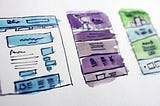
The community of Innovators and Inventors. We welcome people who are passionate about technology as the means of solving big problems. We believe in ideas and the power of online communities. Follow the Innovation Machine to discover problems worth solving and big ideas.
Sign up for Innovation Monthly
By The Innovation Machine
The Newsletter for the Innovation Leader - Methods, Ideas, Technology Updates Take a look.



















